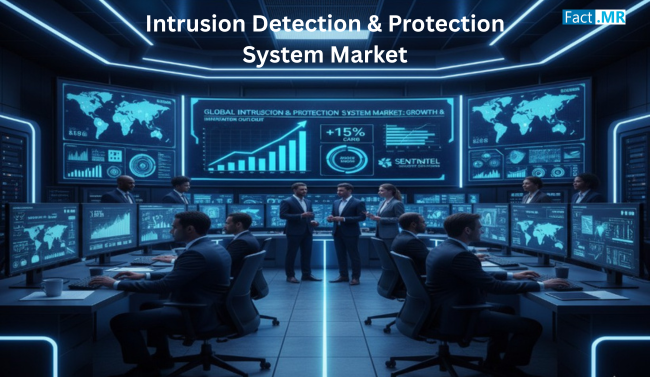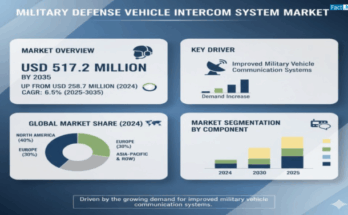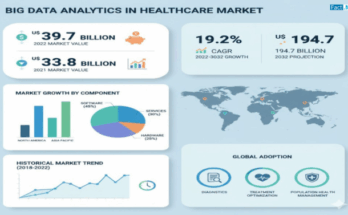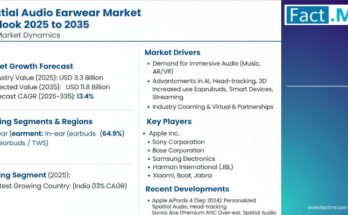As digital transformation accelerates across industries, cybersecurity has become a central pillar of organizational resilience. Among the most critical components of modern defense strategies are Intrusion Detection and Protection Systems (IDPS), designed to monitor, identify, and mitigate malicious activities across IT infrastructures. The IDPS market is witnessing rapid growth, fueled by rising cyber threats, regulatory compliance requirements, and the increasing adoption of cloud technologies. This evolution reflects a growing demand for proactive solutions that not only detect threats but also prevent them before they can disrupt business operations.
Market Overview
The intrusion detection and protection system market focuses on tools and technologies that protect digital assets by identifying unauthorized access, malware, and suspicious network activity. These systems combine real-time monitoring with automated prevention mechanisms, creating a robust shield against evolving cyber threats.
Organizations across sectors such as finance, healthcare, government, energy, and retail are prioritizing IDPS solutions to secure sensitive data and maintain stakeholder trust. The market encompasses various system types, including:
- Network-based Intrusion Detection Systems (NIDS) for traffic monitoring.
- Host-based Intrusion Detection Systems (HIDS) to safeguard specific endpoints.
- Hybrid solutions that integrate multiple monitoring points.
- Prevention-focused frameworks that block detected threats instantly.
The convergence of artificial intelligence, machine learning, and big data analytics is further enhancing IDPS capabilities, enabling predictive threat modeling and faster incident responses.
Regional Insights
North America
North America remains the leading hub for intrusion detection and protection systems, driven by a mature IT ecosystem and significant investment in cybersecurity solutions. The presence of major technology vendors and stringent regulatory frameworks, such as HIPAA and CCPA, contribute to high adoption rates across industries.
Europe
Europe is closely following, particularly due to the General Data Protection Regulation (GDPR) and growing concerns around data sovereignty. Countries like Germany, France, and the UK are heavily investing in next-generation IDPS technologies to safeguard critical infrastructure and enterprise networks.
Asia-Pacific
Asia-Pacific is emerging as a key growth region. Rapid digitalization, expanding e-commerce activity, and the increasing frequency of cyberattacks in countries like India, China, and Japan are fueling demand for robust intrusion detection and prevention solutions. Governments across the region are also introducing policies and public-private collaborations to strengthen cybersecurity frameworks.
Middle East & Africa
The Middle East & Africa region is witnessing steady growth, especially within financial services, oil & gas, and government sectors. National strategies to counter cyber warfare and protect sensitive infrastructures are driving investments in IDPS technologies.
Latin America
Latin America is gradually adopting intrusion detection and protection solutions, with growth concentrated in telecom, finance, and government verticals. Rising internet penetration and digital adoption have made enterprises more aware of the need for robust security systems.
Key Trends & Forecast
Several transformative trends are shaping the future of the IDPS market:
- Integration of AI and Machine Learning
AI-driven analytics are enabling intrusion detection systems to identify anomalies more accurately and reduce false positives. Machine learning algorithms can adapt to new attack patterns, ensuring proactive threat prevention. - Cloud-Native IDPS Solutions
As enterprises migrate workloads to the cloud, demand for cloud-native detection and protection tools is surging. These solutions offer scalability, flexibility, and seamless integration with hybrid environments. - Zero Trust Architecture
The rise of zero trust security frameworks is influencing IDPS development. Systems are being designed to continuously verify user identities and monitor traffic across networks without assuming inherent trust. - Regulatory Compliance
Compliance with data protection laws across regions is a major market driver. Organizations are adopting advanced IDPS tools to align with evolving regulations and avoid heavy penalties. - IoT and Endpoint Security
The proliferation of IoT devices is expanding the attack surface. Modern IDPS solutions are extending their scope to monitor endpoints and connected devices, ensuring comprehensive protection. - Collaboration Between Public and Private Sectors
Governments and private enterprises are increasingly collaborating to develop standards, frameworks, and knowledge-sharing platforms to combat cyber threats more effectively.
Applications & End-Use Outlook
Finance & Banking
Financial institutions rely heavily on IDPS to protect customer data, transaction systems, and digital banking platforms. Real-time threat monitoring is essential in an industry that faces constant phishing, ransomware, and fraud attempts.
Healthcare
With the rise of electronic health records and telemedicine, healthcare organizations are prime targets for cybercriminals. IDPS solutions help safeguard sensitive patient data, ensuring both security and compliance with regulations.
Government & Defense
Government agencies and defense institutions face persistent threats from cyber espionage and state-sponsored attacks. Intrusion detection and prevention systems play a critical role in national security strategies.
Retail & E-commerce
Retailers are increasingly adopting IDPS to protect consumer payment data and e-commerce platforms from breaches, which could otherwise erode customer trust.
Energy & Utilities
As critical infrastructure, energy grids and utility providers require robust cybersecurity defenses. IDPS solutions help in monitoring SCADA systems and mitigating risks of cyber sabotage.
IT & Telecom
Telecommunication companies and IT service providers implement IDPS tools to secure massive data flows and ensure uninterrupted connectivity services.
Future Outlook
The future of the intrusion detection and protection system market lies in convergence. Vendors are moving toward unified platforms that combine threat intelligence, analytics, automation, and remediation under a single framework. The adoption of Security Information and Event Management (SIEM) and Extended Detection and Response (XDR) platforms is expected to complement IDPS offerings, creating more holistic cybersecurity solutions.
Moreover, the increasing sophistication of cyberattacks — including ransomware-as-a-service and AI-powered threats — will keep driving innovation. Enterprises are likely to prioritize systems that not only detect and prevent but also predict attacks, ensuring resilience in a rapidly changing digital ecosystem.
Conclusion
Intrusion Detection and Protection Systems are no longer optional but essential for safeguarding organizations against the rising tide of cyber threats. As businesses expand their digital footprints and adopt cloud-first strategies, the market will continue to evolve, offering more advanced, integrated, and scalable solutions.
Industries ranging from finance to healthcare and government to retail are already prioritizing IDPS adoption, with the focus on trust, compliance, and operational continuity. Looking ahead, organizations that embrace cutting-edge detection and protection frameworks will be better equipped to thrive in a world where cybersecurity resilience defines competitive advantage.



